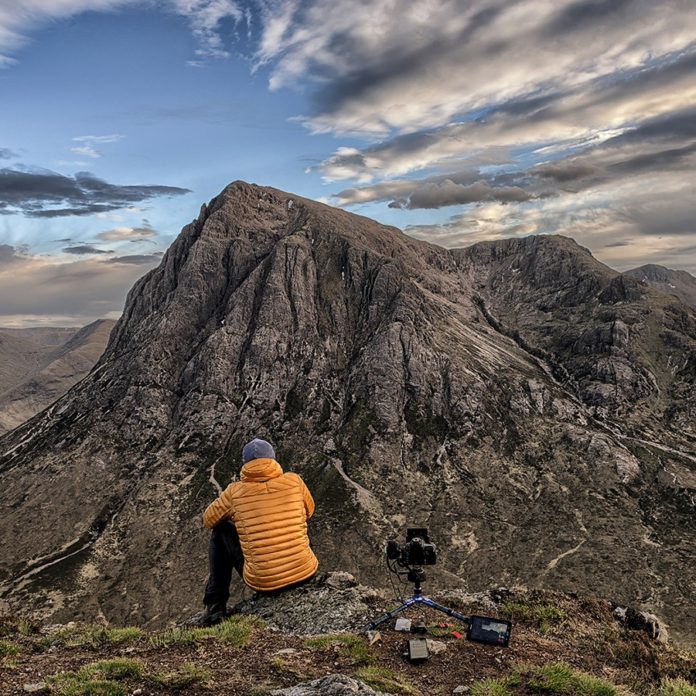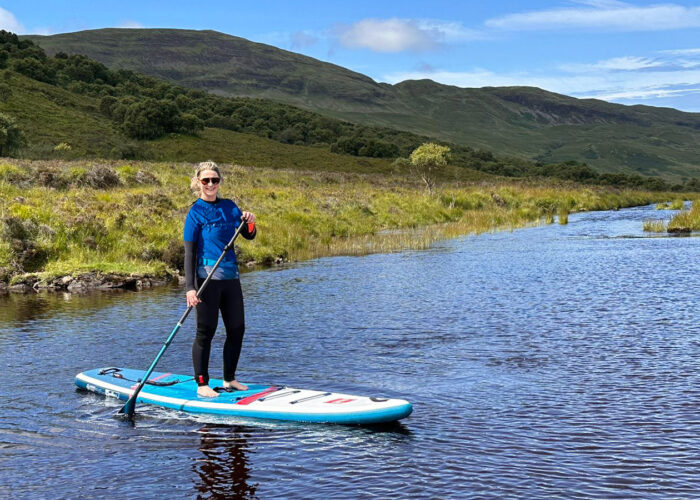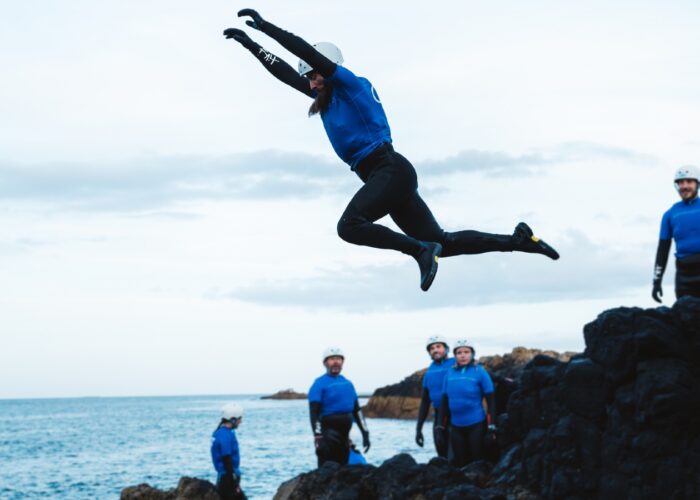Top 20 FAQs for Winter Hillwalking in Scotland
Winter Hillwalking - A Unique Scottish Experience
Scotland is renowned for its breathtaking landscapes and rugged wilderness, and during the winter months, this stunning country transforms into a captivating winter wonderland. Winter hillwalking in Scotland offers an unparalleled adventure for outdoor enthusiasts seeking a unique and exhilarating experience.
Imagine trekking through snowy peaks, surrounded by crisp, frost-covered icy landscapes. The majesty of Scotland's mountains takes on a whole new level of beauty during the winter season, where snow-clad summits and frozen lochs create a picturesque backdrop unlike any other.
Share
Winter Hillwalking in Scotland
Winter hillwalking in Scotland provides a thrilling challenge, requiring careful planning, specialised equipment, and a respect for the unpredictable and often harsh weather conditions. With stunning destinations like the Cairngorms National Park, Ben Nevis, and the stunning Glen Coe, avid adventurers find themselves immersed in a world of breathtaking panoramas and unforgettable moments.
As you embark on a winter hillwalking expedition in Scotland, you will witness nature at its most dramatic and awe-inspiring. The silence of the winter landscape, interrupted only by the sound of crunching snow beneath your boots, evokes a sense of peaceful solitude unlike anything you have ever experienced.
But winter hillwalking in Scotland is not without its risks. The mountains demand respect and careful navigation. It is essential to be equipped with the right gear, including crampons, ice axes, and appropriate clothing, to ensure safety and comfort in the challenging winter conditions.
The reward, however, is immeasurable. Scaling towering mountains, traversing snow-capped ridges, and being rewarded with panoramic views of the surrounding landscapes are experiences that will stay with you forever. The sense of accomplishment upon reaching a summit in winter is incredibly gratifying, a testament to human resilience and dedication.
Whether you are an experienced hillwalker or a novice seeking a new adventure, winter hillwalking in Scotland will leave an indelible mark on your soul. It is an opportunity to connect with nature, challenge yourself physically and mentally, and discover the sheer beauty and grandeur of Scotland's winter wonders.
So, lace up your boots, prepare your winter gear, and embark on an incredible journey of winter hillwalking in Scotland. Discover the magic and serenity that awaits you in this enchanting land of mountains and snow.
Here we look at the top 20 FAQs to help you on your way!
1 - What are Munros?
Munros are mountains in Scotland that reach a height of at least 3,000 feet (914 meters). They are named after Sir Hugh Munro, who published a list of these peaks in 1891. There are 282 Munros, and they offer a challenging and rewarding experience for hillwalkers and mountaineers.
2 - Which Munros are in Glen Coe?
Glen Coe is home to several stunning Munros, including Buachaille Etive Mor, Bidean nam Bian, and Aonach Eagach. These peaks offer breathtaking views, dramatic landscapes, and exciting ridge walks, making them popular destinations for hillwalkers.
3 - What is the weather like in Scotland?
The weather in Scotland can be changeable, particularly in the mountains. It is crucial to be prepared for all conditions. In winter, temperatures can drop significantly, and snowfall and icy conditions are common. Always check the weather forecast and be ready to adjust your plans accordingly
4 - How important is safety during winter hillwalking?
Safety is paramount during winter hillwalking. The challenging conditions, such as steep slopes, icy terrain, and potential avalanche risks, require proper planning and preparation. Follow the Scottish Avalanche Information Service (SAIS) forecasts, inform someone of your plans, and consider going with experienced guides or taking mountaineering courses to enhance your skills and knowledge.
5 - What equipment do I need for winter hillwalking?
For winter hillwalking, essential equipment includes warm and waterproof clothing, including insulated layers, a waterproof jacket and pants, gloves, and a hat. You'll also need sturdy, insulated boots with crampon compatibility, gaiters, an ice axe for self-arrest, crampons for traction on icy slopes, a map and compass (and the skills to use them), a headlamp, and a fully charged mobile phone or emergency communication device.
You can read all about Preparing for Winter Hillwalking in Scotland here.
6 - Can I go winter hillwalking alone?
It is generally recommended to go winter hillwalking with a companion or as part of a group. However, if you are experienced, well-prepared, and confident in your skills, solo hillwalking can be an option. Always inform someone of your plans and estimated return time.
7 - What are professional mountaineering companies like Ocean Vertical?
Professional mountaineering companies, like Ocean Vertical, specialize in guiding and supporting individuals or groups in their mountain adventures. They offer expert knowledge and experience, ensuring safety, providing guidance, and maximizing your enjoyment of the mountains. They can arrange tailored trips, provide equipment rental, and offer valuable instruction on winter skills, making them an excellent resource for those seeking a well-organized and safe winter hillwalking experience.
8 - Is winter hillwalking in Scotland safe?
Winter hillwalking in Scotland can be safe if you are well-prepared, have the necessary skills, and are aware of the potential hazards. It is crucial to stay updated with weather forecasts and avalanche conditions, and to carry the appropriate safety equipment.
You can read more about the Top 10 Tips for Winter Mountaineering in Scotland here.
9 - What weather conditions can I expect in Scotland during winter?
Winter weather in Scotland can vary significantly, with cold temperatures, snowfall, strong winds, and low visibility. It is essential to be prepared for rapidly changing weather conditions and to adjust your plans accordingly.
10 - Do I need any special equipment for winter hillwalking?
Winter hillwalking in Scotland requires specific equipment such as sturdy winter boots, warm clothing layers, a headlamp, map and compass, ice axe, crampons, gaiters, and a winter-specific backpack. These items will help ensure your safety and comfort in challenging conditions.
you can read about What to Wear and Pack for Winter Mountaineering in Scotland here.





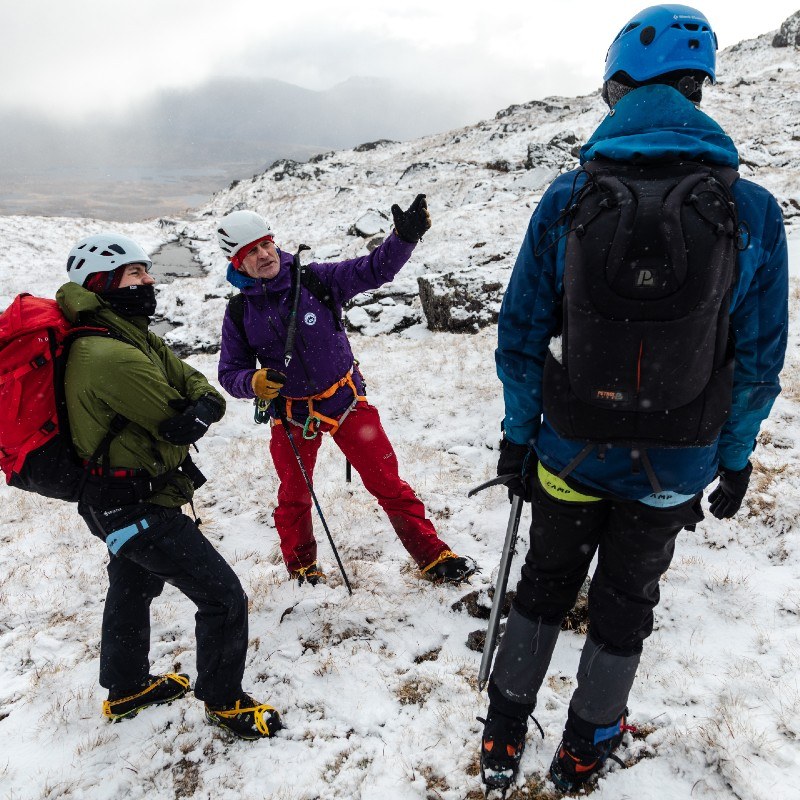
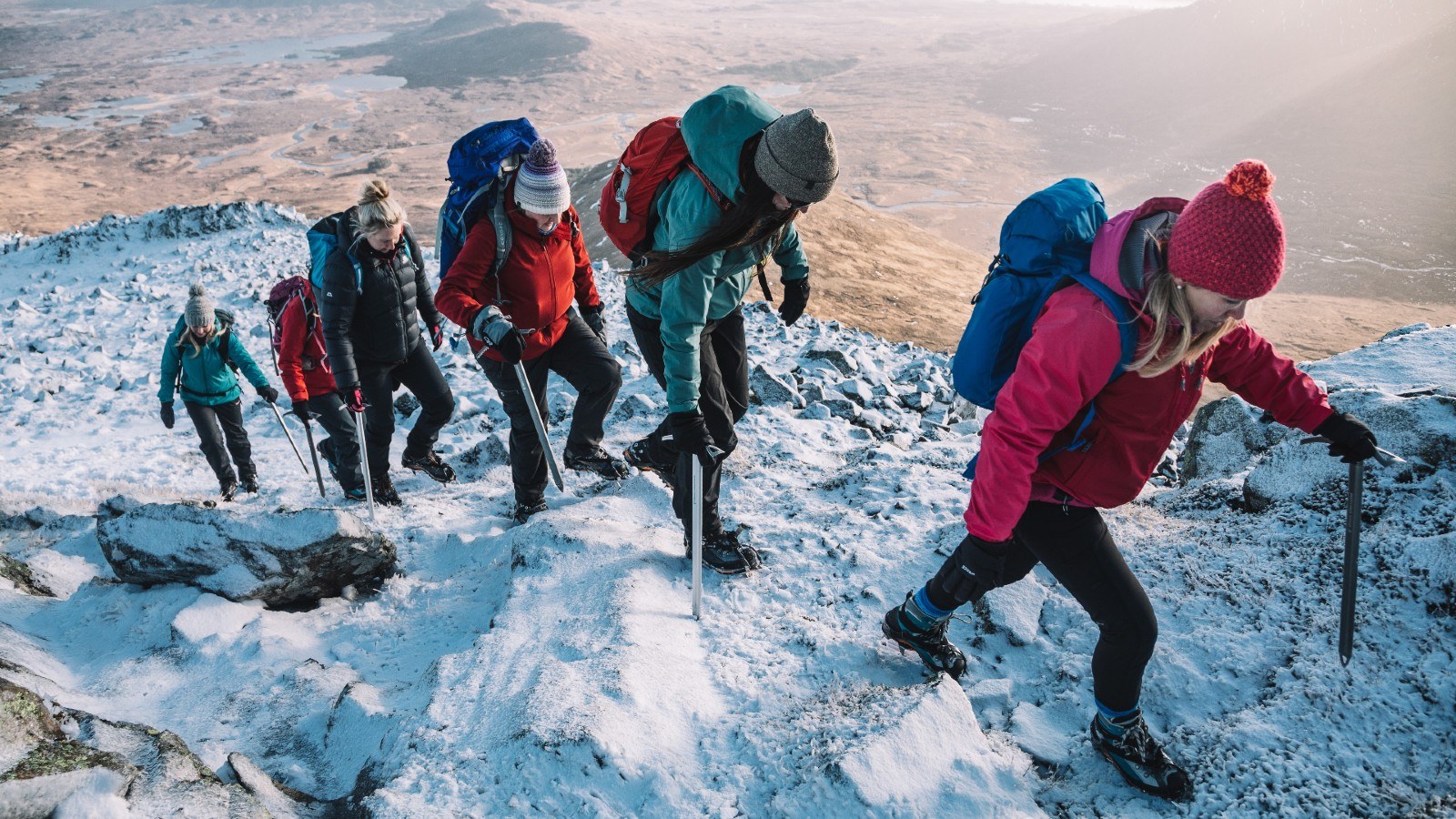
Hitting the snow-line in Glen Coe winter hillwalking.
11 - Are there any specific skills or experience required for winter hillwalking?
Winter hillwalking demands additional skills compared to summer hiking, such as route navigation, winter-specific first aid knowledge, and understanding avalanche safety. It is advisable to gain experience in winter conditions or seek the guidance of an experienced guide or mountaineering company like Ocean Vertical.
You can see details of Winter Mountain Skills Courses here.
12 - What are the best Munros to climb in winter, particularly in Glen Coe?
Glen Coe offers several incredible Munros for winter hillwalking, including Buachaille Etive Mor, Bidean nam Bian, and Aonach Eagach. These mountains, with their rugged beauty and challenging terrain, provide unforgettable experiences for experienced winter hillwalkers
13 - Can I hike Munros in winter without prior experience?
It is not recommended to attempt winter Munro hikes without prior winter hillwalking experience. The challenging conditions require knowledge, skills, and equipment specific to winter mountaineering. Building experience through summertime hiking and gradually progressing to winter hikes is advisable.
14 - Should I hire a professional mountaineering company for winter hillwalking?
Engaging a professional mountaineering company like Ocean Vertical is strongly recommended for those new to winter hillwalking or lacking experience. Their expert guides are skilled in navigation, mountain safety, and first aid, ensuring a safer and more enjoyable experience
15 - How important is it to check avalanche forecasts?
Checking avalanche forecasts is crucial before heading into the mountains during winter. Avalanche conditions in Scotland can be high-risk, and understanding the current state can help you make informed decisions and choose safer routes.
The best advice and information can be found on the Scottish Avalanche Information Service.
16 - Are there any specific safety measures I should take during winter hillwalking?
Winter hillwalking safety measures include leaving a detailed plan with someone, carrying essential safety equipment, dressing appropriately for the conditions, knowing how to use your equipment effectively, and being prepared to turn back if conditions worsen.
17 - Can I walk Munros in winter without a guide?
While it is possible to walk Munros in winter without a guide, it is strongly recommended for inexperienced hillwalkers to hire the services of professional mountaineering companies such as Ocean Vertical or an experienced guide. They can provide expertise, knowledge of the local area, and ensure your safety in challenging winter conditions
18 - Is winter hillwalking in Scotland more dangerous than in summer?
Winter hillwalking in Scotland can be more challenging due to unpredictable weather conditions, potential hazards like snow and ice, and shorter daylight hours. It requires additional skills, experience, appropriate equipment, and a thorough understanding of winter mountaineering techniques
19 - What safety precautions should I take for winter hillwalking?
Inform someone of your planned route, expected return time, and emergency contact details. Carry a map and compass, understand navigation techniques, and be prepared to turn back if conditions deteriorate. Check avalanche bulletins, follow safe route choices, and practice self-arrest techniques with an ice axe.
20 - How do I assess the weather conditions before heading out winter hillwalking?
Monitoring weather conditions is crucial for winter hillwalking. Check reliable sources such as the Met Office, Mountain Weather Information Service (MWIS), or local mountaineering organizations for forecasts and updates. Pay attention to temperature, wind speed, visibility, and avalanche risk.

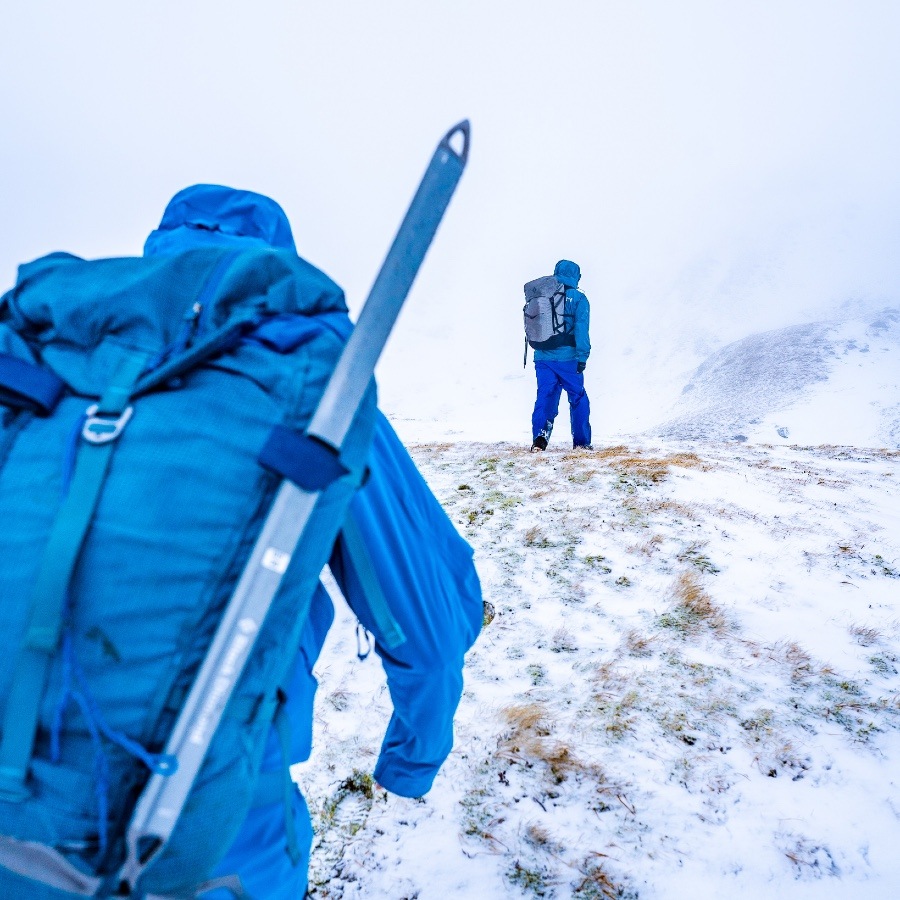



Featured trips
Share








